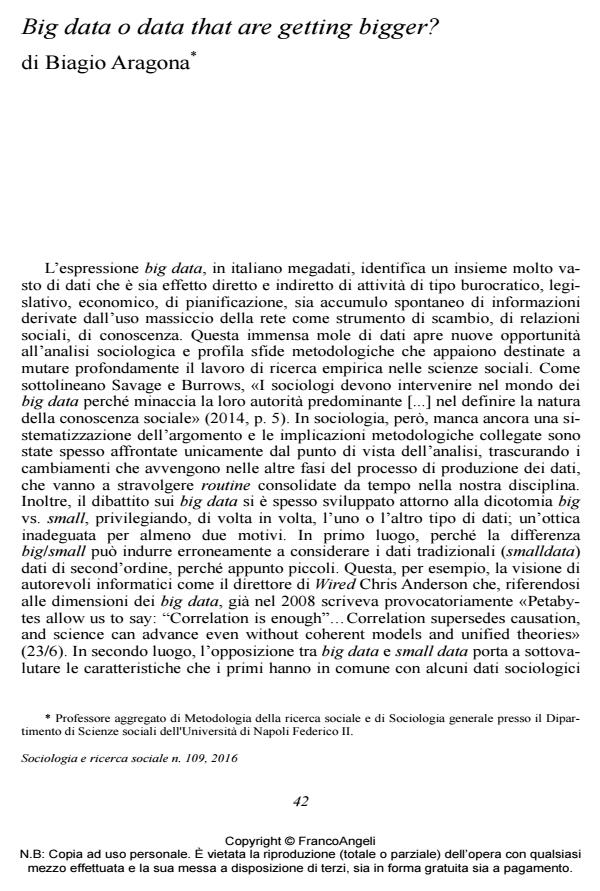Big data o data that are getting bigger?
Titolo Rivista SOCIOLOGIA E RICERCA SOCIALE
Autori/Curatori Biagio Aragona
Anno di pubblicazione 2016 Fascicolo 2016/109
Lingua Italiano Numero pagine 12 P. 42-53 Dimensione file 59 KB
DOI 10.3280/SR2016-109005
Il DOI è il codice a barre della proprietà intellettuale: per saperne di più
clicca qui
Qui sotto puoi vedere in anteprima la prima pagina di questo articolo.
Se questo articolo ti interessa, lo puoi acquistare (e scaricare in formato pdf) seguendo le facili indicazioni per acquistare il download credit. Acquista Download Credits per scaricare questo Articolo in formato PDF

FrancoAngeli è membro della Publishers International Linking Association, Inc (PILA)associazione indipendente e non profit per facilitare (attraverso i servizi tecnologici implementati da CrossRef.org) l’accesso degli studiosi ai contenuti digitali nelle pubblicazioni professionali e scientifiche
The potential of Big Data for sociology is being recognized broadly, but there is still a wide gap between its potential and its realization. One of the reasons is that Big Data encloses types of data which are very different. This articles aims to identify the features of Big Data that are common to other traditional sociological data such as registers, traces and documents. Secondly, its purpose is to propose a typology of Big Data based on four criteria: data origin, flexibility, presence of operational definitions, presence of metadata. Finally, the main methodological issues deriving from the different phases of the data production process are presented for every type of Big Data.
- Big data in policy making Biagio Aragona, Rosanna De Rosa, in Mathematical Population Studies /2019 pp.107
DOI: 10.1080/08898480.2017.1418113
Biagio Aragona, Big data o data that are getting bigger? in "SOCIOLOGIA E RICERCA SOCIALE " 109/2016, pp 42-53, DOI: 10.3280/SR2016-109005